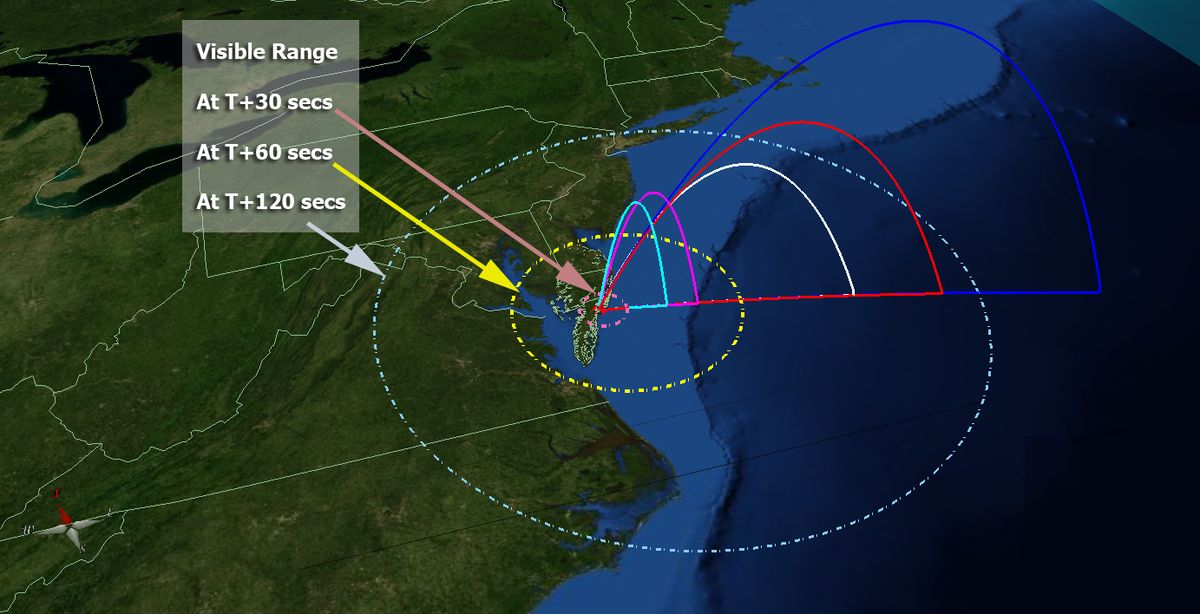
NASA Launching 5 Rockets to Study Hyper-Fast Winds This Week

NASA will launch a fleet of five unmanned suborbital rockets this week to study dynamic winds at the edge of space. The spectacle is expected to put on a brief but impressive light show for people along the United States' mid-Atlantic coast, who should be able to see glowing streaks from the rockets' vapor trails, agency officials have said.
The Anomalous Transport Rocket Experiment, or ATREX, is scheduled to launch early tomorrow (March 21) depending on weather conditions at NASA's Wallops Flight Facility in Virginia. The liftoff window opens at midnight EDT (0400 GMT) and closes at 5a.m. EDT (0900 GMT).
The five rockets will blast off in just over five minutes to study high-altitude winds that can blow at staggering speeds of 300 mph (483 kph) or stronger. This so-called upper-level jet stream is located between 60 to 65 miles (97 to 105 km) above the Earth's surface.
These fast-moving winds are much higher and stronger than the jet streamcommonly referred to in weather forecasts. Existing theories suggest that Earth's high-altitude jet stream should blow at just 50 mph (80 kph), so the ATREX mission aims to examine why such a large discrepancy exists, researchers said. [Photos: NASA's ATREX Rocket Barrage Mission]
Each ATREX rocket is loaded with a chemical tracer, called trimethyl aluminum, which will help scientists map the winds. This chemical poses no threat to the environment or to human health, NASA officials said.
The rockets will be launched on five different trajectories, and will release the tracer material at altitudes between 50 to 90 miles (80 to 145 km). This will create glowing, milky white clouds that could be visible for up to 20 minutes by people along the United States East Coast, from South Carolina to southern New Hampshire and Vermont, NASA officials said.
Two of the ATREX rockets will carry instruments to measure temperature and atmospheric pressure. Researchers will monitor three different cameras (one at the Wallops facility, one in North Carolina and one in New Jersey) to track the tracer clouds and calculate how quickly they move away from one another. These measurements will provide clues about what is powering these fast winds.
Sign up for the Live Science daily newsletter now
Get the world’s most fascinating discoveries delivered straight to your inbox.
Clear skies are needed for the launch to give the cameras the best possible view.
The $4 million mission has been delayed several times since its original launch date on March 14, first due to a radio glitch on one of the rockets, and then because of unfavorable weather conditions.
NASA will broadcast the five ATREX launches online live, with coverage beginning two hours before the opening of the launch window. The webcast will be available here: http://sites.wff.nasa.gov/webcast
This story was provided by SPACE.com, a sister site to OurAmazingPlanet. Follow SPACE.com for the latest in space science and exploration news on Twitter @Spacedotcom and on Facebook.












